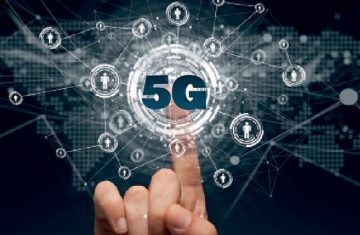The Mouthpiece: G, what’s following?

5G is coming. It is a major advancement in wireless modern technology, we are informed, and will allow smart phones as well as networks to run at a speed and ability which, up to now, was just found on cable television solutions. It will set new criteria for integrity and also capability in wireless interactions.
This pledge is at the core of all the assured growth that make use of digital innovation, such as self-driving automobiles, robots, and also interactive virtual reality programs.
The G mean “generation.” Exactly how do we inform the generations apart? At the point where a given piece of modern technology transforms the means we perceive and use it, a brand-new generation can be proclaimed. First generation cellular phone can only take care of analog call. After that came the second generation, which enabled electronic calls, texting, and also encryption of messages. 3G enabled cordless broadband for cellphone networks. 4G is numerous orders of size a lot of effective and also reliable at transferring and managing digital BK8 web content.
5G is not quite below yet– Verizon and also AT&T have set up what totals up to beta screening in several UNITED STATE cities. It is predicted to double the information speed as well as ability now offered via 4G networks, by utilizing heretofore untapped frequencies of data transfer.
It’s all about the data transfer.
Transmission capacity is another name for carrying capability. The even more transmission capacity is offered, the faster, much more precise, and much more fascinating net offerings come to be. To compare, 1G, the first generation, delivered at 2.4 thousand bits per 2nd (kbps). 2G upped the stake to 64 kbps and introduced digital instead of analog innovation. 3G, a major enhancement, can provide at a low end of 144 kbps, as much as maximum of 2 million bps (2MBPS). 4G can deal with 100 Mbps right to 1 Gbps (gigabytes, or billion attacks per second). The most recent, 5G, may go ten times high because 5G can make use of greater frequency bands (millimeter) than its precursors.
Furthermore, 5G promises better top quality links. There will be a lot of less latency– that is, lag time in between transmission and function. Excessive latency suggests a jerky, fragmented image, and also hold-up in publishing client interaction with the website or program.
If you are, as an example, making in-game or in-race bets, delay can imply the difference between having the ability to make a bet that is registered in time to be counted, and simply missing out on, due to the fact that you weren’t able to see what was going on real-time, or because your wagers, actions, and directions didn’t get here quick sufficient to be applied. Now the average latency for 4G connections is 16 to 60 nanoseconds (ms), almost imperceptible. 5G intends to reduce latency down to 1 ms, which for sensible objectives indicates no latency at all. Along the same lines submit time for input from the individuals as well as customers to apps, programs and data will additionally diminish.
The catch
Naturally, there are constraints and demands that include any kind of brand-new modern technology. For 5G, the primary trouble is array and also wavelength. 5G will utilize higher regularities, however greater regularities suggest shorter array. They are likewise subject to be blocked by huge barriers such as buildings, or soaked up by rainfall, snow, and also wooded areas. That suggests a need for more cell towers than 4G currently requires– concerning every 300 yards, according to some price quotes.
Legal climate-potential factors
In the beginning look, the arrival of 5G’s would seem to be a neutral growth from a lawful standpoint. On the web gaming will certainly be doing the exact same thing, just quicker.
Transforming the guidelines
Next, we return yet again to the irritated question of state legislation territory. If 5G signals are short variety, then any little information they transfer need to always undergo a collection of little towers. So obtaining web content over long distances, it appears, will certainly involve jumping from 5G tower to 5G tower. If that holds true (do not neglect, comprehensive 5G networks have yet to be constructed), after that the signal needs to necessarily cross state lines.
Now expect that there is a wager transferred in between homeowners of 2 states, and also B, which both permit web gaming. However the passage from A to B uses web links and also towers which are literally located in a 3rd state, Z.
If state Z does not allow web gaming, is it an offense of state legislation when the wager goes through its towers, even for a couple of nanoseconds? Even if no residents of states Z are involved?
There is an argument that the pass-through is an offense. It has actually already been developed, for instance, that an airliner crossing with the airspace of a given state can be subject to the laws of that state.1.
But wouldn’t Government rules supersede state rules, given that interstate interactions are a government issue under the FCC? Not necessarily.
The future.
There will naturally be other lawful concerns relating to other facets of 5G or even 10G capability. Will issue wagering be increased by the intense individual experience that Enhanced Reality as well as Virtual Reality will offer? What responsibility will AR and also VR services and designers need to keep an eye out for? Will the needed density of 5G mini-towers call for the application of eminent domain?
However the large inquiries will certainly still take front and center. Just how is state jurisdiction established in such brand-new networks? What brand-new formats will run away the legal definition of “gambling,” and also which ones will not? What obligation would fall on 5G systems which are utilized for monetary transfers which are later determined to breach the UIGEA?












